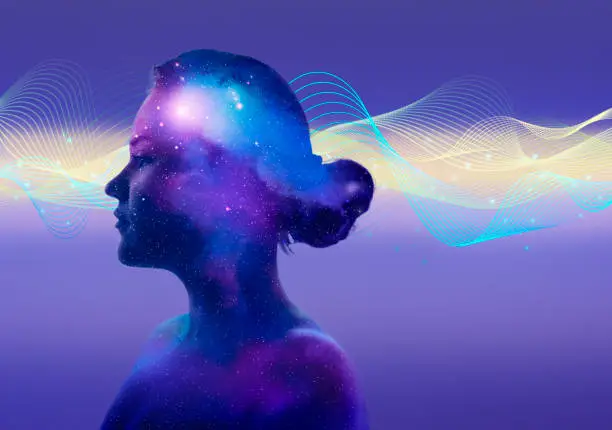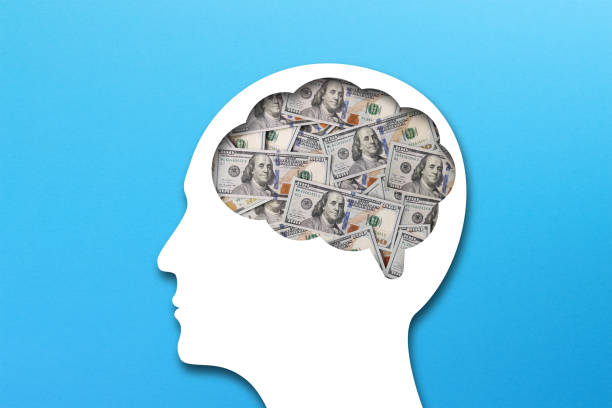In the vast theater of memory, thousands of scenes flicker and vanish like candle flames in a windstorm. Faces blur. Days dissolve. Weeks vanish into the folds of the mundane. But every now and then—unexpectedly and unmistakably—a moment burns itself into your mind with the brilliance of a lightning strike.
Maybe it’s the first time you fell in love. Or the day a tragedy unfolded before your eyes. Maybe it was a small, ordinary thing—your mother’s voice calling your name through the evening rain. Or the golden glint of sunlight hitting your childhood kitchen table. You didn’t choose to remember it, and yet there it is, years or even decades later, vivid and alive.
Why?
Why do some moments etch themselves into the architecture of the brain forever, while others disappear without a trace? What makes certain fragments of life so emotionally adhesive, so psychologically unshakable?
To answer that, we must journey into the depths of the mind, into a swirling network of neurons, chemicals, and emotions—where memory is not a recording, but a living, breathing act of creation.
Memory Isn’t a File Cabinet—It’s a Story
For centuries, memory was imagined as a kind of storage box in the brain—a library or a filing system, where each experience was stored neatly, waiting to be retrieved. But modern neuroscience tells us something startling: memory doesn’t work like that at all.
Memories are not static. They’re dynamic. They’re not stored like books; they’re reassembled like stories.
Each time you remember something, you don’t pull it off a shelf—you recreate it. Your brain reconstructs the memory by stitching together fragments: sights, sounds, emotions, sensations. Memory is an act of imagination built on fact.
That means remembering is never just a retrieval. It’s a remix. It’s creative, interpretive, and deeply influenced by who you are now.
So why do some memories get better seats in the theater of your mind? What earns them their permanence?
The answers lie in the chemicals of emotion, the architecture of the brain, and the drama of the moment.
Emotion: The Glue That Binds
Emotion is the jet fuel of memory.
When something stirs your heart—when you’re terrified, euphoric, furious, devastated—your brain takes notice. Emotion signals importance. It tells your nervous system: This matters. Pay attention. Remember this.
Neuroscientists have found that emotionally charged experiences trigger the amygdala, a small almond-shaped structure deep in the brain. The amygdala acts like a spotlight operator, shining attention on critical details. It helps activate the hippocampus, which is crucial for encoding memory. Together, they signal the brain to sear the event into long-term storage.
This is why you remember where you were on the day of a tragedy. Or how your stomach flipped on that rollercoaster. Or the smell of your grandmother’s perfume when she hugged you goodbye for the last time.
Emotion locks in memories—not just the facts, but the feelings. It’s not just the event that’s stored, but your experience of the event.
And sometimes, that experience becomes unforgettable.
Flashbulb Memories: When Time Stands Still
In 1977, psychologists Roger Brown and James Kulik coined the term flashbulb memories—vivid, high-detail memories of emotionally intense events. These memories feel like a snapshot taken with a mental camera: sharp, lasting, and strangely clear.
People often describe flashbulb memories with striking clarity. Not just what happened, but where they were, who they were with, even what they were wearing. The Challenger explosion. September 11. The moment they heard devastating or exhilarating personal news.
But here’s the paradox: even though these memories feel accurate, research shows they’re not always reliable. Details shift over time. Memory plays tricks. Yet the confidence people have in these memories stays high.
This shows us something crucial: memory is not just about information. It’s about meaning.
Flashbulb memories aren’t special because they’re flawless. They’re special because they feel significant. They feel like turning points. Markers of before and after.
In those moments, the world cracks open, and the brain records it all with urgency and intensity.
The Role of Surprise and Novelty
Not all unforgettable moments are dramatic or tragic. Some are simply new.
The human brain is built to detect novelty. We are hardwired to notice change—because change means new information, and new information could mean opportunity or danger. This is an evolutionary trait. The same mechanism that helped our ancestors survive in unpredictable environments still drives our attention today.
That’s why your first time doing something is often more memorable than your hundredth. First kiss. First day of school. First heartbreak. First flight. First snowfall.
These moments are burned into memory not just because of emotion, but because they were unexpected. Novelty triggers the release of dopamine, a chemical involved in motivation, reward, and learning. Dopamine strengthens the connections between neurons, making the memory more robust.
In fact, even small, novel details can enhance memory. This is why travel memories are so vivid—your brain encounters new smells, sights, sounds, and patterns. Time seems to stretch because your mind is soaking in unfamiliar stimuli.
Novelty awakens the brain. And an awake brain remembers.
Repetition and Reflection: Rehearsing the Past
Emotion and novelty explain why we remember something—but how we continue to remember it often comes down to repetition.
The more we think about a moment, talk about it, journal about it, or dream about it, the more solidified it becomes. Every recollection is like adding another coat of paint to a mental image.
But remember, memory is reconstructive. Each time we recall an event, we subtly reshape it. We emphasize certain details, omit others, and interpret it through the lens of our current beliefs and emotions.
Over time, a remembered moment becomes more than just a record of what happened. It becomes a symbol. A story. A part of who we are.
This is especially true of emotionally formative events—moments that change our identity. A childhood humiliation that taught us to fear rejection. A triumph that gave us confidence. These memories don’t just live in the brain. They live in the self.
Why We Remember What Others Forget
Have you ever shared a memory with a sibling or friend, only to realize they remember it completely differently—or not at all?
That’s not a glitch. That’s human.
Memory is subjective. Your brain doesn’t just record what happened—it records what mattered to you. It encodes based on attention, emotion, values, and relevance.
If a moment aligns with your fears, hopes, or sense of self, it becomes psychologically sticky. That’s why two people can live through the same day and come away with entirely different mental snapshots.
What we remember is filtered through who we are.
And who we are is shaped, in turn, by what we remember.
Trauma: When Memory Hurts
Some moments are unforgettable because we want to remember them. Others, because we can’t stop remembering.
Traumatic memories—of violence, loss, abuse, or fear—can become involuntary. Instead of being encoded and filed away like normal memories, trauma hijacks the brain’s stress system. The amygdala goes into overdrive. The hippocampus, which normally organizes memories in time and space, gets disrupted.
As a result, traumatic memories can feel frozen, disorganized, or intrusive. They often replay in flashbacks or nightmares, with physical and emotional intensity.
Trauma expert Bessel van der Kolk describes this as the body “keeping the score.” The memory isn’t just mental—it’s somatic. It lives in muscle tension, in breathing patterns, in heart rate and posture.
Healing from trauma often involves learning to reprocess these memories—to transform them from overwhelming sensations into integrated, narrative experiences. Therapy, especially EMDR and trauma-informed approaches, can help people reshape how these memories live in the body and brain.
Unforgettable doesn’t always mean cherished. Sometimes it means unfinished.
Joyful Memory: Savoring the Good
Thankfully, not all indelible moments are painful. Some are deeply joyful—weddings, births, reunions, breakthroughs.
Positive memories, too, can be deeply emotional and long-lasting. But research shows they often need help to stick. That’s because the brain is evolutionarily biased toward negative information—it’s a survival mechanism. Bad news gets attention because it could be dangerous.
To combat this, psychologists suggest savoring—deliberately focusing on, extending, and mentally replaying joyful experiences. Taking a few extra seconds to appreciate the taste of food, the warmth of sun, the smile of a friend. Writing down three good things each day.
This strengthens the neural pathways of gratitude and positivity. It helps you remember what’s good—and carry it with you.
Music, Smell, and the Sensory Anchors of Memory
Some memories come rushing back not with a thought, but with a sound or a scent.
A single song can teleport you back to a summer night ten years ago. The smell of rain on pavement can awaken a childhood afternoon long forgotten.
That’s because certain senses—especially smell—are directly wired to the brain’s emotional and memory centers. The olfactory bulb, which processes smell, is tightly linked to the amygdala and hippocampus. Unlike other senses, it bypasses the thalamus, which normally acts as a relay station. That’s why smell-evoked memories are so vivid, emotional, and immediate.
Music, too, has a unique power to trigger autobiographical memory. It taps into rhythm, emotion, and pattern recognition—core elements of brain function. Music encodes memory not just through lyrics, but through the emotional and temporal context in which we experienced it.
That song you danced to in high school? It’s a neurological time capsule.
Memory and the Architecture of Meaning
In the end, we remember not just what happened—but what it meant.
Meaning is the hidden current beneath every unforgettable moment. A look from someone we loved. A word that pierced through our armor. A decision that changed our path.
These aren’t just facts. They’re turning points.
The moments we remember forever are the ones that tell us something about who we are, what we’ve survived, and what we value. They are stars in the constellation of identity. They help us navigate by illuminating where we’ve been.
As Viktor Frankl wrote, “What gives light must endure burning.” Meaningful memories shine because they shaped us, even if they scorched us.
You Are the Stories You Keep
The science of memory is the science of being human. It is at once biological, psychological, and poetic. Every unforgettable moment you carry is a living artifact of who you are and who you were.
You don’t remember everything. You were never meant to.
But your brain, in its quiet wisdom, chooses certain moments to keep. Not at random, but with purpose. It remembers what mattered. It remembers what changed you.
And in doing so, it keeps the story of your life alive—one precious, unforgettable moment at a time.






